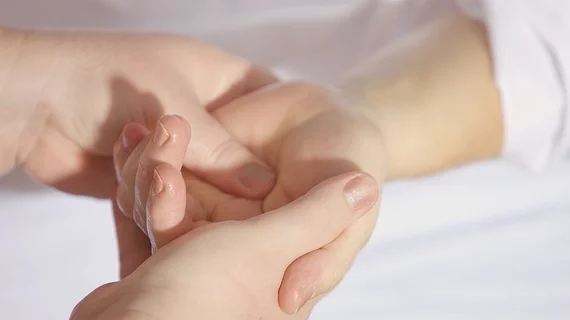Imaging-guided treatment for carpal tunnel syndrome provides long-term relief without surgery or hospitalization
Carpal tunnel syndrome can be successfully treated without surgery, according to new findings to be presented at RSNA 2022 in Chicago.
Carpal tunnel syndrome, which impacts approximately 3% of the U.S. population, often requires surgery when physical therapy and corticosteroid injections fail to provide long-term relief. A new technique known as hydrodissection, however, has shown the potential to change the way clinicians treat this serious condition.
When clinicians perform hydrodissection, they inject a liquid—typically saline—into the patient’s nerve to help separate it from the surrounding tissue. Medical imaging plays a key role as well, as ultrasound technology is brought in to identify the nerves that are going to be treated. The procedure typically lasts 10 to 15 minutes, and it is viewed as being quite cost effective compared to more complex procedures such as major surgeries.
This latest study focused on ultrasound-guided hydrodissection included data from 63 patients who presented with carpal tunnel syndrome. This cohort was separated into three groups: one that received ultrasound-guided hydrodissection with a saline injection, a second group that received ultrasound-guided hydrodissection with a mix of saline and corticosteroids and a third group that received only an ultrasound-guided corticosteroid injection.
Overall, after four weeks, all three groups reported improvements when it came to their symptoms. After 12 weeks and six months, both groups who underwent ultrasound-guided hydrodissection were still reporting improvements—but the corticosteroid injection group said symptoms has returned.
Also, the authors noted, ultrasound results highlighted a reduction of the median nerve cross-sectional area in both groups who underwent ultrasound-guided hydrodissection.
“It came as a pleasant surprise when this simple procedure of ultrasound-guided hydrodissection provided patients with long-term relief,” co-author Anupama Tandon, MBBS, MD, a professor with the department of radiology at University College of Medical Sciences in Delhi, India, said in a statement. “The patients were highly satisfied, as the cost was low, no anesthesia or hospitalization was needed, and they could go back in an hour’s time and resume their routine work.”
Additional coverage of RSNA 2022 is available here and here.

